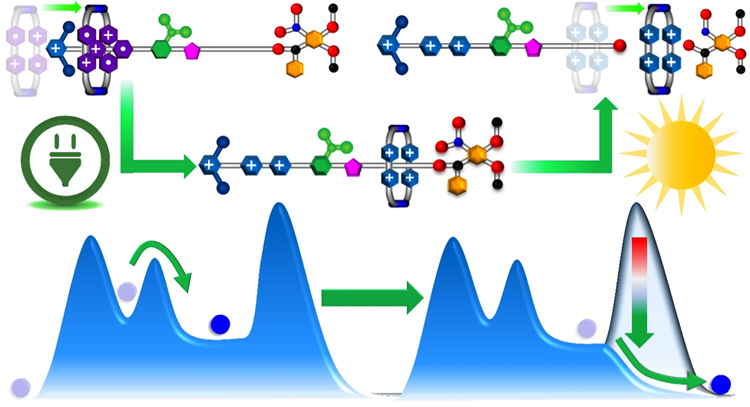
Operating Artificial Molecular Pump by Electricity and Light Sequentially / Qinghui Guo
Publications – 1203
This alternative version of artificial molecular pump incorporating a photocleavable stopper can capture and subsequently release a ring, in a linear manner, by applying electricity and light sequentially.

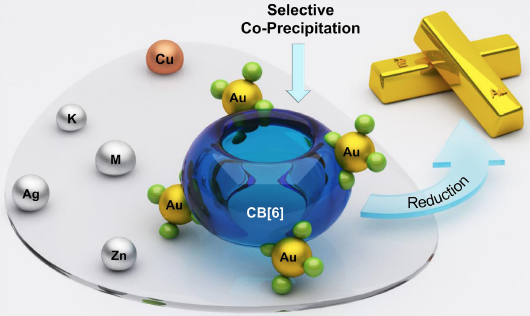
High-Efficiency Gold Recovery Using Cucurbit[6]uril / Huang Wu
Publications – 1202
A laboratory-scale efficient gold recovery protocol has been established based on the instantaneous assembly between cucurbit[6]uril and gold-bearing salts, MAuX4 (M = H / K & X = Cl / Br), in which 99.8% of the gold present in the raw material has been recovered.

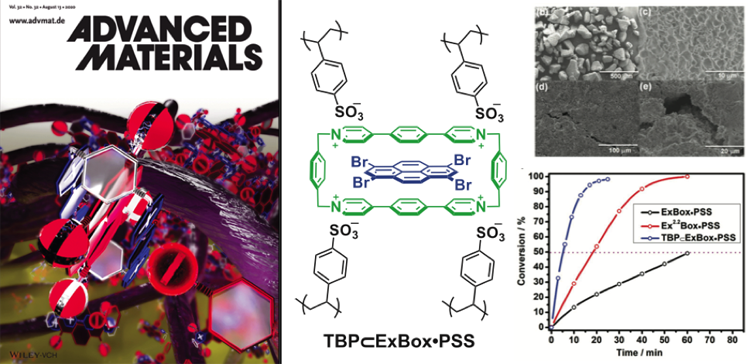
Nanocomposites for Heterogeneous Photocatalysis / Yassine Beldjoudi
Publications – 1201
A supramolecular photosensitizer with efficient intersystem crossing was achieved by combining the spin-orbit coupling associated with heavy Br atoms in TBP and the photoinduced electron transfer in a TBP⸦Exbox4+ dyad. Incorporation of the TBP⸦Exbox4+ into a polystyrene sulfonate (PSS) matrix forms a nanocomposite photosensitizer.

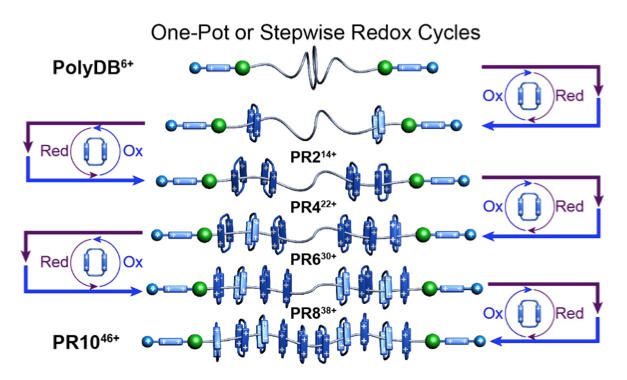
A Precise Polyrotaxane Synthesizer / Yunyan Qiu
Publications – 1193
The assembly line-like emergence of polyrotaxanes with increasingly higher energies by harnessing artificial molecular pumps to deliver tetracationic rings in pairs by cyclical redox-driven processes has been reported in Science. This controlled strategy leads to the precise installation of two, four, six, eight, and 10 rings carrying 8+, 16+, 24+, 32+, and 40+ charges, respectively, onto hexacationic polymer dumbbells. This strategy allows for the production of away-from-equilibrium polyrotaxanes with control over the numbers, sequences, and functions of threaded rings. This research program is opening up new avenues that represent little more than the tip of the iceberg.

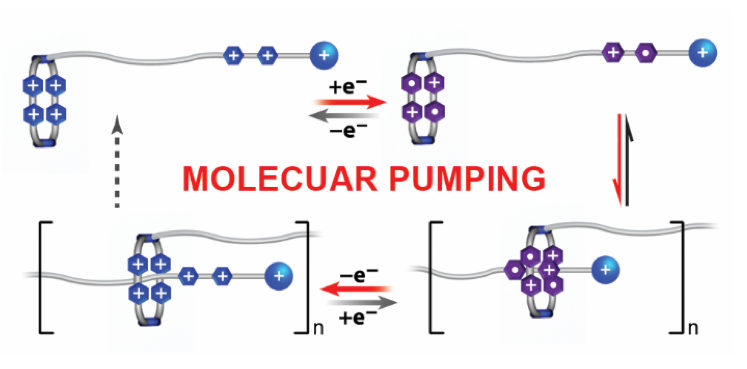
Molecular-Pump-Enabled Polymerization / Kang Cai
Publications – 1192
A kinetically stable daisy chain polymer has been synthesized out-of-equilibrium, using a self-complementary monomer by means of a redox-controlled molecular pumping process. The polymer can also be depolymerized and thus the monomer recycled under redox control.

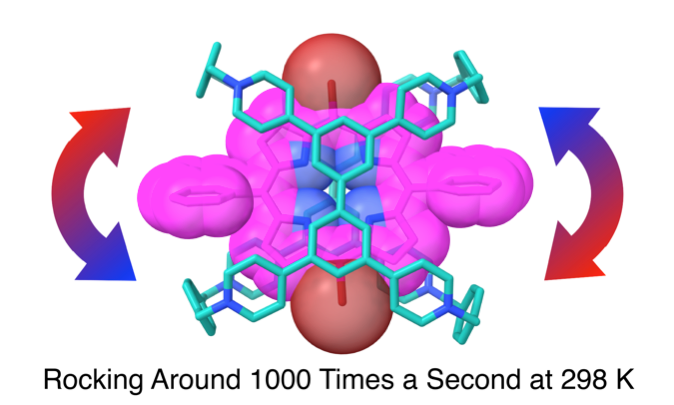
Suit[4]ane / Wenqi (Vince) Liu
Publications – 1191
Suitanes are two-component mechanically interlocked molecules in which one (torso) of the components, with several protruding limbs, is encompassed by another (suit) all-in-one component. We have reported a suit[4]ane, wherein a porphyrin with its four protruding limbs, encompassed by a tricyclic cyclophane, rocks back and forth inside the cyclophane.

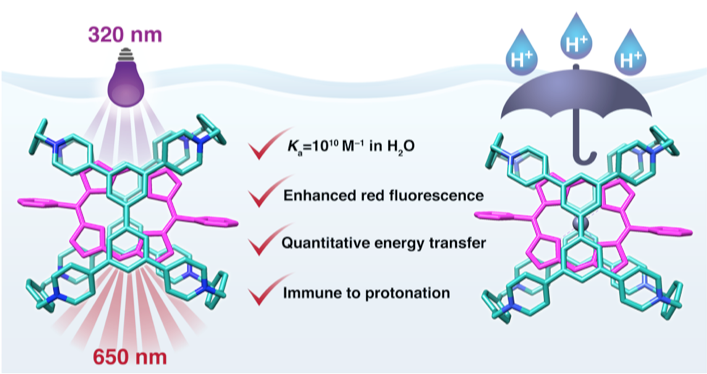
Cyclophane-Sustained Ultrastable Porphyrins / Wenqi (Vince) Liu
Publications – 1190
The encapsulation of free-base and zinc porphyrins by a tricyclic cyclophane receptor, XCage, is sustained by subnanomolar binding affinities in water. The resulting complexes demonstrate emergent photophysical enhancements and enjoy unprecedented chemical stabilities, where their D/H exchange, protonation, and solvolysis, under extremely acidic conditions, are completely blocked.

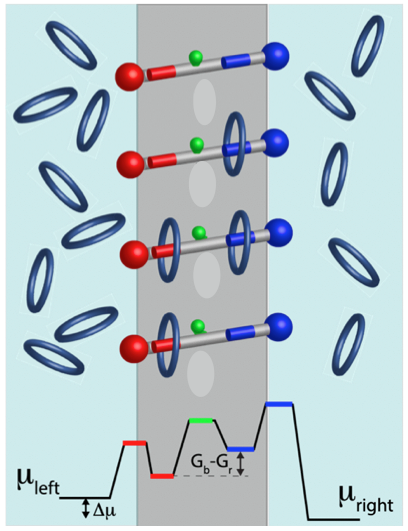
Non-Equilibrium Kinetics & Thermodynamics of Molecular Pumps / Yuanning Feng
Publications – 1189
Non-equilibrium kinetics and thermodynamics associated with transporters and pumps featuring different design principles — i.e., energy and information ratchet mechanisms have been summarized. The limitation of stochastic thermodynamics for catalytic processes has been discussed.

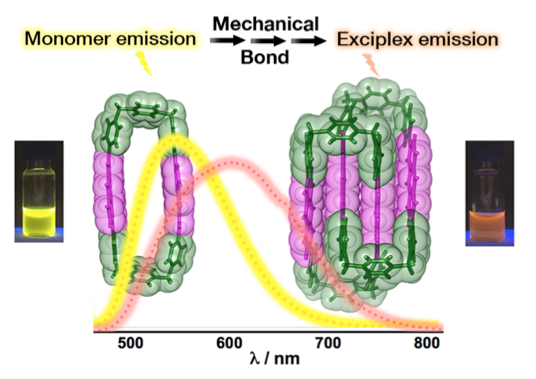
Mechanical-Bond-Induced Exciplex Fluorescence / Amine Garci
Publications – 1188
Our approach to obtaining permanent exciplex photoluminescence begins with the incorporation of anthracene moieties into pyridinium-containing mechanically interlocked molecules (MIMs). The difference in the optical properties of the anthracene-based cyclophanes and the precursor homo[2]catenane are consistent with the role of the mechanical bond in the emergence of the low energy exciplex emission in the catenane.

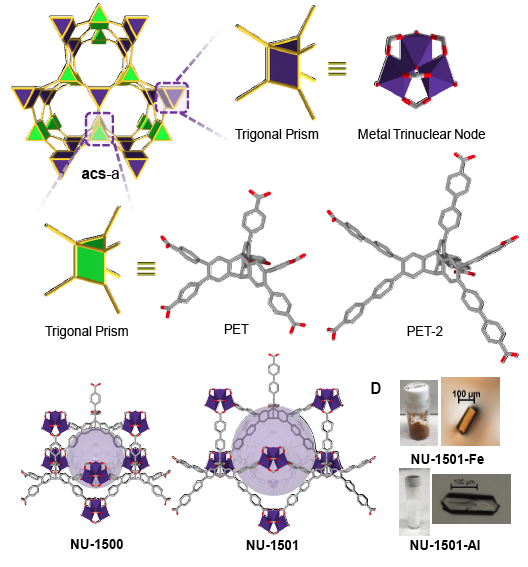
Ultraporous MOFs / Penghao Li
In Collaboration with – Farha Group / Zhijie Chen
Publications – 1184
The simulation-motivated synthesis of ultraporous metal–organicf rameworks (MOFs) based on metal trinuclear clusters, namely NU-1501-M (M=AlorFe), was realized. Relative to other ultraporous MOFs, NU-1501-Al exhibits a concurrently high gravimetric Brunauer−Emmett−Teller(BET) area of 7310 m2/g-1and av olumetric BET area of 2060 m2/cm-3. The high porosity and surface area of this MOF yielded impressive gravimetric and volumetric storage performances for hydrogen and methane.

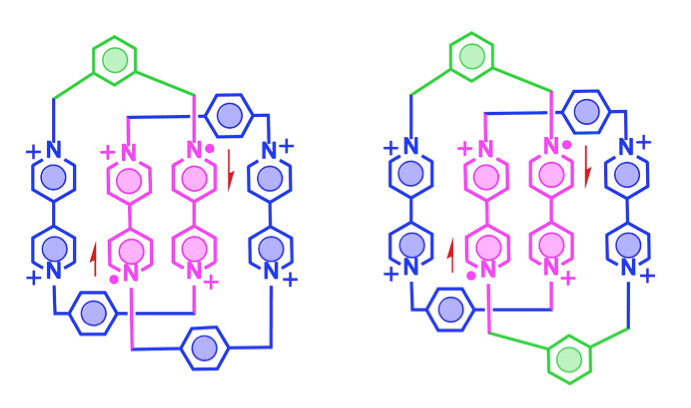
Stabilizing Bisradicals with Mechanical Bond / Kang Cai
Publications – 1184
Two new highly charged [2]catenanes have been synthesized and isolated as air-stable singlet bisradicals displaying mixed-valency and multiple redox-states thanks to the unique nano-confinement induced by mechanical bonds in these catenanes.

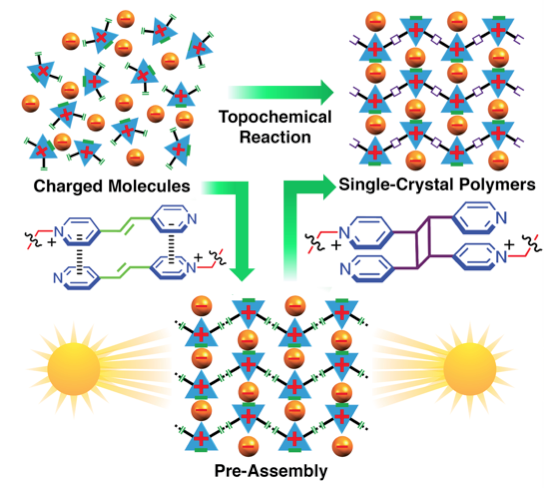
Single-Crystal Polymers / Qinghui Guo
Publications – 1183
A new principle has been established for preparing single-crystal polycationic polymers utilizing an ultraviolet/sunlight-induced single-crystal-to-single-crystal photopolymerization on a gram-scale in quantitative yield from tricationic monomers possessing self-complementary building blocks.

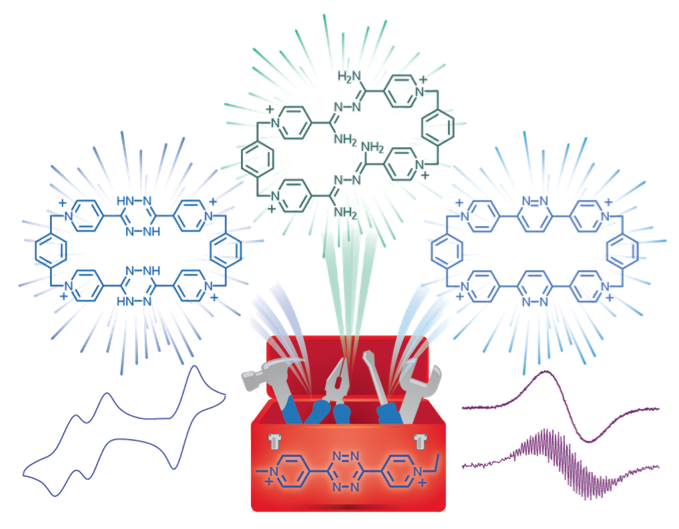
Tetrazine Box / Qinghui Guo
Publications – 1182
We have made a TetrazineBox, which serves as a toolbox for probing the radical properties and generating efficiently a range of structurally diverse cyclophanes by box-to-box cascade transformations, taking advantage of either reductions or an inverse electron-demand Diels-Alder reaction.

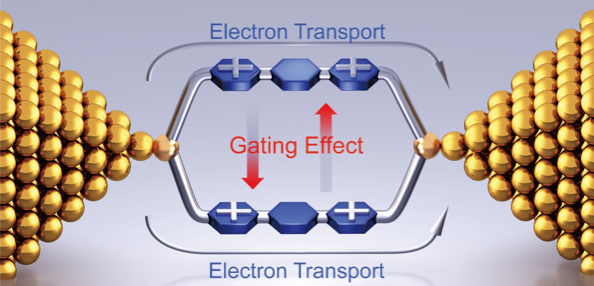
Single-Molecule Conductance of Charged Cyclophanes / Hongliang Chen
Publications – 1181
Intramolecular circuits are built with two-channel charged cyclophanes. An interchannel gating effect and constructive quantum interference act synergistically, leading to a conductance that is 50-fold higher than that of a single-channel control, breaking the single-molecule superposition law.


XCage / Wenqi (Vince) Liu
Publications – 1180
A new tricyclic octacationic cyclophane, XCage, which has a stereoelectronic complementarity towards perylene diimide and shows a picomolar binding affinity in water, has been designed and synthesized.


Redox-Active Macrocycles for Zinc Batteries / Kwan Woo Nam
Publications – 1179
A two-dimensional (2D) conductive metal-organic framework (MOF) with large one-dimensional channels has been developed as a zinc battery cathode. Owing to its unique structure, hydrated Zn2+ ions which are inserted directly into the host structure, Cu3(HHTP)2, allow high-rate performance.

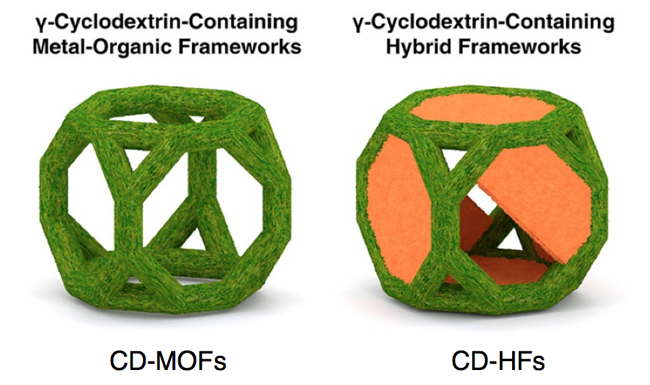
CD-Containing Hybrid Frameworks / Dengke Shen
Publications – 1178
A class of γ-cyclodextrin-containing hybrid frameworks (CD-HFs) has been synthesized, employing γ-cyclodextrin (γ-CD) as the primary building blocks, along with 4-methoxysalicylate (4-MS–) anions as the secondary building blocks.

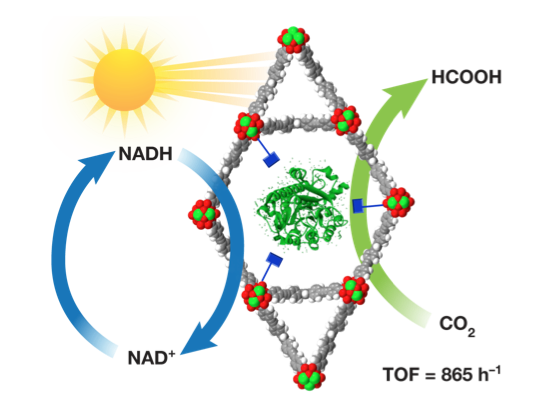
Semi-Artificial Photosynthetic System / Penghao Li
In Collaboration with – Farha Group / Zhijie Chen
Publications – 1177
A prototypical semi-artificial photosynthetic system for efficient carbon dioxide fixation was realized using a modified metal-organic framework NU-1006, which comprises a pre-installed Rh-based electron mediator and also encapsulates coenzyme NAD+/NADH.

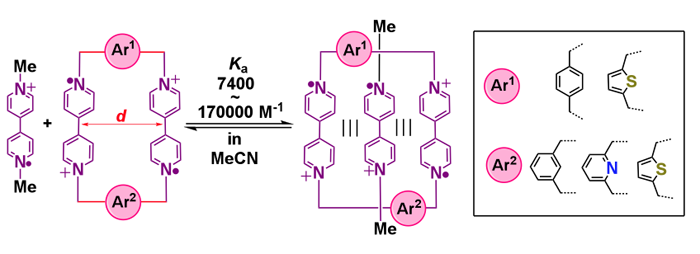
Radical-Pairing Interactions in New Hosts / Kang Cai
Publications – 1176
The structure-property relationships between cavity sizes and binding affinities for radical-pairing interactions have been investigated using a series of bisradical dicationic cyclophanes (purple) with different linker units (Ar1 and Ar2 / light pink) to modulate their cavity sizes.

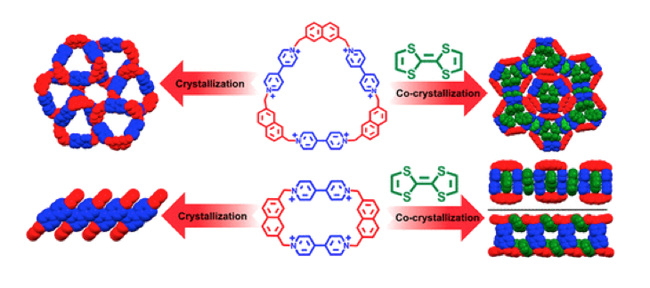
2D Tessellations by Charged Cyclophanes / Yassine Beldjoudi
Publications – 1175
Electron donor-acceptor cyclophanes are programmable building blocks which adopt different 2D tessellations using charge transfer (CT) interactions. The TTF–cyclophane 2D tessellations display dual intra- and intermolecular CT behavior, offering multi-responsive materials.


A molecular dual pump / Yunyan Qiu
Publications – 1172
A molecular dual pump, which consists of two individual pumps linked in a head-to-tail fashion, has been designed and synthesized for the controlled capture and release of a ring via a [2]rotaxane intermediate.


Conductive 2D MOFs for Zinc Batteries / Kwan Woo Nam
Publications – 1170
A redox-active triangular phenanthrenequinone-based macrocycle (PQ-Δ) with a rigid geometry has been developed as a zinc battery cathode. The macrocyclic nature of the PQ-Δ cathode provides a dramatically increased capacity and cyclability compared to that of traditional organic materials.

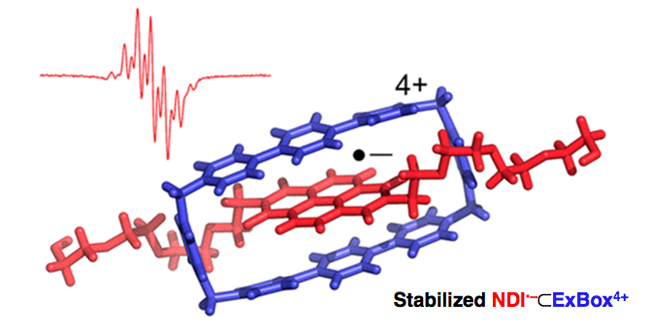
Cyclophane-Protected NDI Radical / Kang Cai
Publications – 1169
A new strategy has been presented which stabilizes the NDI•– radical anion and modulates its redox properties, by host-guest encapsulation and/or mechanical interlocking with a tetracationic cyclophane, namely, ExBox4+.

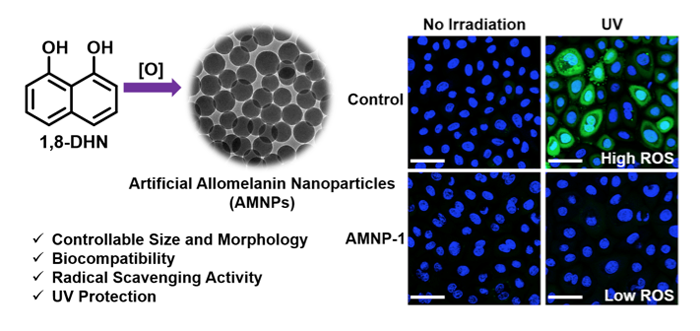
Artificial Allomelanin Nanoparticles / Yuanning Feng
In Collaboration with – Gianneschi Group / Xuhao Zhou
Publications – 1168
Artificial allomelanin nanoparticles (AMNPs), analogous to one type of melanin produced by radiation-resistant fungi, have been prepared with well-defined nanostructures. They can be taken up by human epidermal keratinocytes and act as radical scavengers.
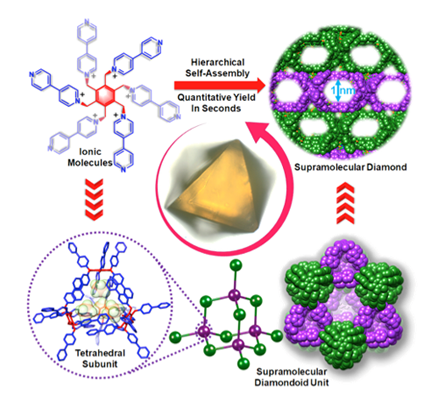
A Supramolecular Diamond / Qinghui Guo
Publications – 1167
A unique approach has been established for constructing supramolecular diamond crystals with nanoporous diamondoid superstructures and octahedral shapes, resulting from the hierarchical self-assembly of preorganized hexa-charged molecules quantitatively within seconds under ambient conditions.

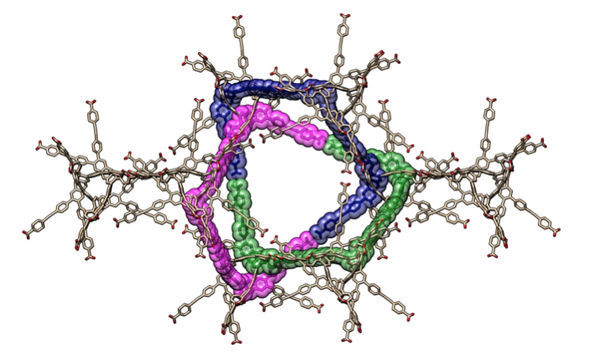
Supramolecular Polyknot / Penghao Li
Publications – 1166
A hydrogen-bonded three-dimensional porous supramolecular polyknot with unprecedented self-entangled topology is assembled from a rigid trigonal prismatic triptycene building block with six extended peripheral aryl-carboxyl groups.

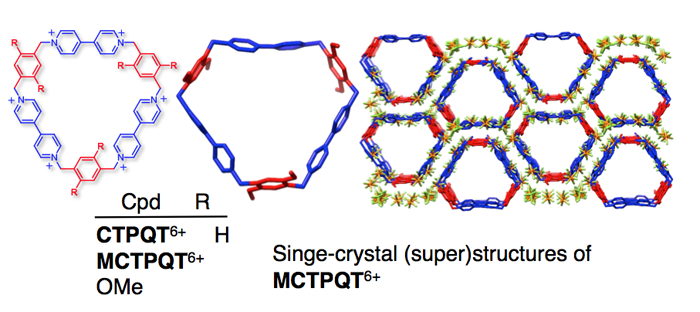
Cyclotris(paraquat-p-phenylenes) / Qinghui Guo
Publications – 1165
Redox-active and shape-persistent cyclophanes, namely CTPQT6+ and MCTPQT6+, which are the homologous tricyclic derivatives of the trademark Blue Box from our group, have been synthesized. These derivatives adopt triangular conformations and the 3D packing of MCTPQT6+ results in nanometer-sized channels in the solid state.

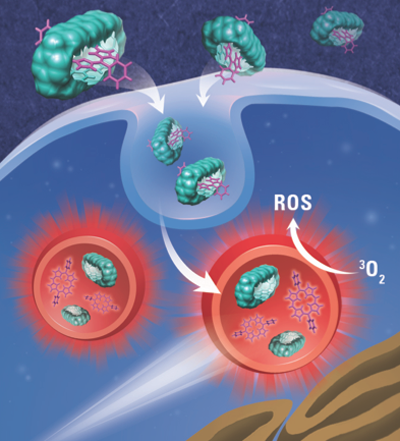
Regulated Photodynamic Activity of a Photosensitizer / Indranil Roy
Publications – 1164
A multifunctional synthetic receptor ExBox4+ has been employed to achieve supramolecular photoprotection, lysosomal delivery, and pH-triggered release of a photosensitizer. The use of the ExBox4+ -bound photosensitizer in anticancer treatment using regulated photodynamic therapy is described.

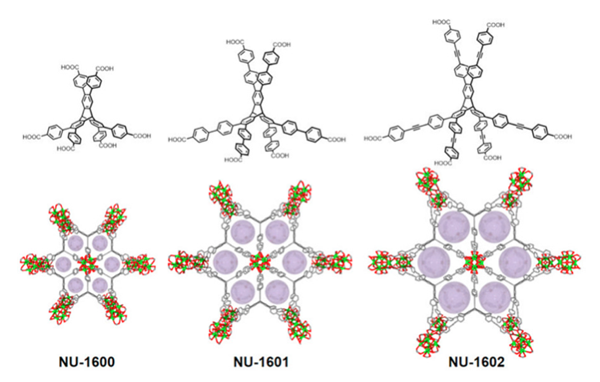
Ligand-Directed Synthesis of Zr-MOFs / Penghao Li
In Collaboration with – Farha Group / Zhijie Chen
Publications – 1163
A series of zirconium-based metal-organic frameworks (Zr-MOFs), i.e. NU160X, with the edge-transitive alb net, was synthesized reticularly from 12-connected hexagonal Zr6 nodes and 6-connected trigonal-prismatic triptycene linkers. These Zr-MOFs exhibit remarkable activities toward the destruction of a nerve agent (Soman) and a nerve agent simulant.

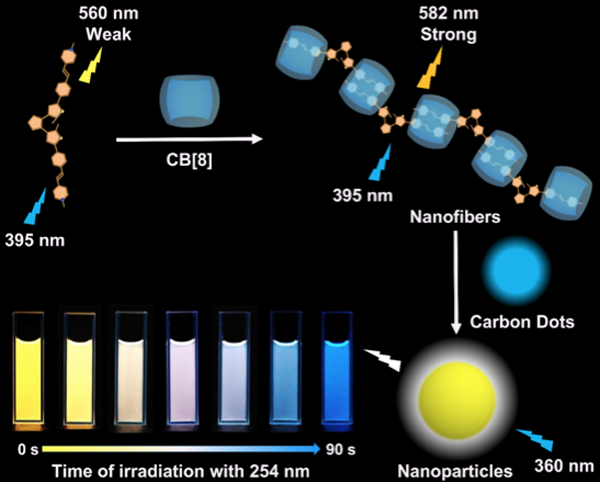
In Situ Photoconversion of Multicolor Luminescence / Huang Wu
Publications – 1160
A photoluminescent supramolecular assembly, the fluorescence of which can be changed efficiently from yellow to blue in an in situ photo-controlled manner, has been prepared in two stages. Employing this assembly, white light emission can be realized expeditiously by a luminescence color-conversion process.

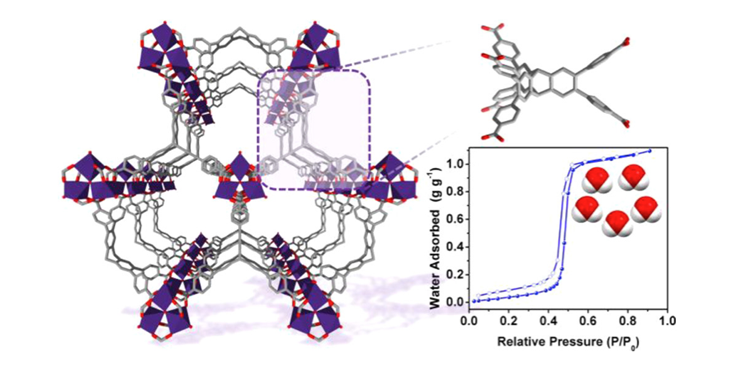
Highly Porous acs-MOFs for Water Sorption / Penghao Li
In Collaboration with – Farha Group / Zhijie Chen
Publications – 1158
A series of non-catenated metal-organic frameworks based on the acs net (acs-MOFs), i.e. NU-1500, was synthesized from trivalent trinuclear metal (Fe3+, Cr3+ and Sc3+) clusters and 6-connected trigonal-prismatic linkers. The highly porous and hydrolytically stable NU-1500-Cr can be activated directly from water and displays an impressive water vapor uptake with a trace of hysteresis.

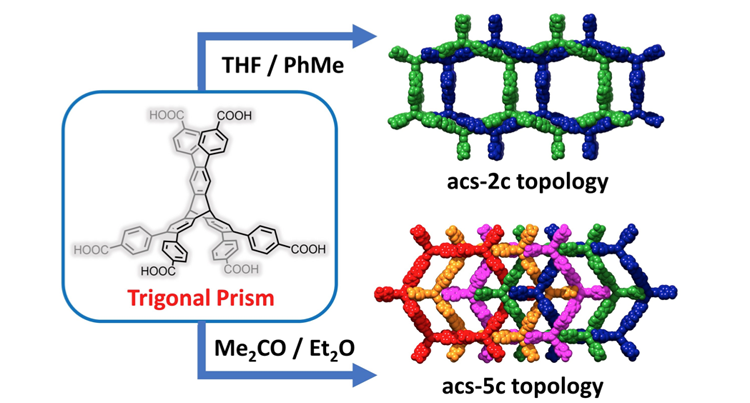
Interpenetration Isomerism in HOFs / Penghao Li
Publications – 1157
A trigonal prismatic triptycene building block assembles into either a two‐fold interpenetrated acs network (acs‐2 c) or a five‐fold interpenetrated acs network (acs‐5 c) depending upon the crystallization conditions.

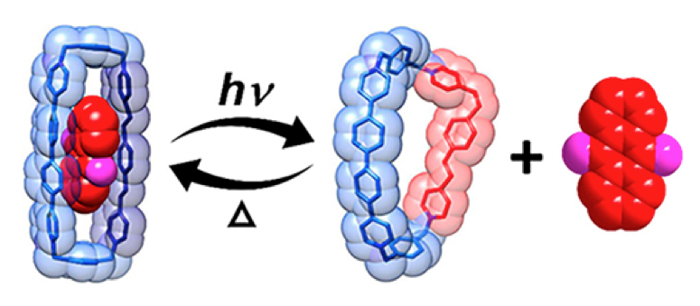
Controllable Molecular Encapsulation with Dynamic Host / Huang Wu
Publications – 1156
When a photo-switchable oligo(p-phenylenevinylene) bipyridinium unit (light pink) is incorporated into a tetracationic cyclophane (light blue), it confers upon the cyclophane the ability to direct reversible guest (red and pink) capture and release using thermal and photo stimuli.

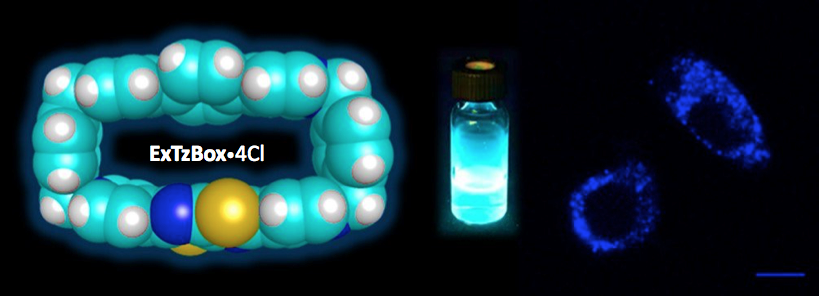
Cyclophane for Live-Cell Imaging / Indranil Roy
Publications – 1141
A glowing tetracationic cyclophane (ExTzBox•4Cl) with unity quantum yield has been synthesized and utilized for live-cell imaging. This work, which describes the significance of using box-like cyclophanes for bioimaging, holds promise for the development of multimodal imaging platforms.

